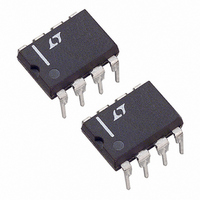LT1025CN8 Linear Technology, LT1025CN8 Datasheet - Page 6

LT1025CN8
Manufacturer Part Number
LT1025CN8
Description
IC THERMO COMPNSATR MICRPWR 8DIP
Manufacturer
Linear Technology
Type
Thermocouple Conditionerr
Datasheet
1.LT1025CN8PBF.pdf
(12 pages)
Specifications of LT1025CN8
Input Type
Voltage
Output Type
Voltage
Current - Supply
150µA
Mounting Type
Through Hole
Package / Case
8-DIP (0.300", 7.62mm)
Lead Free Status / RoHS Status
Contains lead / RoHS non-compliant
Interface
-
Available stocks
Company
Part Number
Manufacturer
Quantity
Price
Company:
Part Number:
LT1025CN8
Manufacturer:
LT
Quantity:
5 510
Part Number:
LT1025CN8
Manufacturer:
LT/凌特
Quantity:
20 000
Company:
Part Number:
LT1025CN8#PBF
Manufacturer:
Linear Technology
Quantity:
1 875
Company:
Part Number:
LT1025CN8#PBF
Manufacturer:
VISHAY
Quantity:
12 592
Part Number:
LT1025CN8#PBF
Manufacturer:
LINEAR/凌特
Quantity:
20 000
APPLICATIO S I FOR ATIO
LT1025
In many situations, thermocouples are used in high noise
environments, and some sort of input filter is required.
(See discussion of input filters). To reject 60Hz pick-up
with reasonable capacitor values, input resistors in the
10k-100k range are needed. Under these conditions, bias
current for the amplifier needs to be less than 1nA to avoid
offset and drift effects.
To avoid gain error, high open loop gain is necessary for
single-stage thermocouple amplifiers with 10mV/ C or higher
outputs. A type K amplifier, for instance, with 100mV/ C
output, needs a closed loop gain of 2,500. An ordinary op
amp with a minimum open loop of 50,000 would have an
initial gain error of (2,500)/(50,000) = 5%! Although closed
loop gain is commonly trimmed, temperature drift of open
loop gain will have a very deleterious effect on output
accuracy. Minimum suggested open loop gain for type E, J,
K, and T thermocouples is 250,000. This gain is adequate for
type R and S if output scaling is 10mV/ C or less.
Suggested Amplifier Types
THERMOCOUPLE
E, J, K, T
R, S
Thermocouple Nonlinearities
Thermocouples are linear over relatively limited temperature
spans if accuracies of better than 2 C are needed. The graph
in Figure 4 shows thermocouple nonlinearity for the
temperature range of 0 C to 400 C. Nonlinearities can be
dealt with in hardware by using offsets, breakpoints, or power
series generators. Software solutions include look-up tables,
power series expansions, and piece-wise approximations.
For tables and power series coefficients, the reader is referred
to the ASTM Publication 470A.
Hardware correction for nonlinearity can be as simple as an
offset term. This is shown in Figure 5. The thermocouple
shown in the figure has an increasing slope ( ) with
6
LTKA0x
LTKA0x
LT1012
LT1001
LT1012
U
15V
U
SUPPLY VOLTAGE
LTC1050
LTC1052
LTC1050
LTC1052
LTKA0x
LT1012
LT1001
LT1006
LTKA0x
5V
W
SINGLE SUPPLY
LTC1050
LTC1052
LTC1050
LTC1052
LT1006
LT1006
U
temperature. The temperature range of interest is between T
and T
used and calibrated at T
and very low at T
calibrating at T1/6 or T5/6 can significantly reduce errors. The
technique is as follows:
1. Calculate amplifier gain:
2. Use precision resistors to set gain or calibrate gain by
introducing a precision “delta” input voltage and trimming
for proper “delta” output.
G = (SF) (T
SF = Output scale factor, e.g., 10mV/ C
V
V
H
L
H
= Thermocouple output at T
= Thermocouple output at T
Figure 4. Thermocouple Nonlinearity, 0 C to 400 C
, with a calibration point at T
12.5
17.5
2.5
7.5
V
10
15
V
20
H
0
5
L
0
0
H
SIMPLE AMPLIFIER
Figure 5. Offset Curve Fitting
– T
50
ERROR AFTER OFFSETTING
OFFSET AMPLIFIER
H
J SCALE
L
. Adding the proper offset term and
100
)/(V
ERROR BEFORE OFFSETTING
T
TEMPERATURE ( C)
TEMPERATURE ( C)
L
SCALE E
M
K SCALE
150
H
SCALE T
T1/6
, the output will be very high at T
– V
200 250
L
)
T
THERMOCOUPLE
M
M
L
H
. If a simple amplifier is
300 350 400
T5/6
LT1025 • G05
LT1025 • G04
T
H
3
0
1
2
4
5
6
7
8
1025fb
L
L














